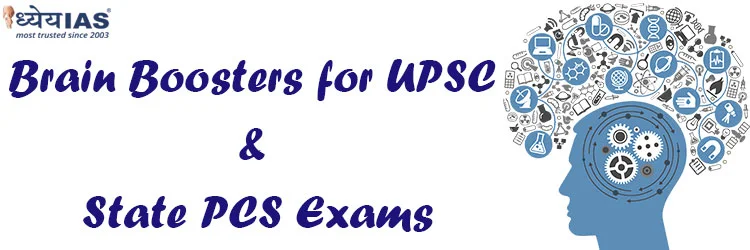Current Affairs Brain Booster for UPSC & State PCS Examination
Topic: Common Electoral Roll

Why in News?
- In a move that ties in with the idea of simultaneous elections in the country, the Prime Minister’s Office (PMO), in August 2020, held a meeting to discuss the possibility of preparing a common voters’ list for elections to all local bodies, state assemblies and Lok Sabha.
Background
- The Election Commission, the Law Commission and the Parliamentary Standing Committee on Law and Personnel Ministries have supported the idea of a single voter list in the past also. The Law Commission recommended it in its 255th report in 2015. The EC too adopted a similar stance in 1999 and 2004.
- The distinction stems from the fact that the supervision and conduct of elections in our country are entrusted with two constitutional authorities — the Election Commission (EC) of India and the State Election Commissions (SECs).
- Set up in 1950, the EC is charged with the responsibility of conducting polls to the offices of the President and Vice-President of India, and to Parliament, the state assemblies and the legislative councils.
- The SECs, on the other hand, supervise municipal and panchayat elections. They are free to prepare their own electoral rolls for local body elections, and this exercise does not have to be coordinated with the EC.
Current Scenario
- Currently, a majority of the states use the EC’s voters list, instead of their own, to elect their municipalities and panchayats.
- However, Uttar Pradesh, Uttarakhand, Odisha, Assam, Madhya Pradesh, Kerala, Odisha, Assam, Arunachal Pradesh, Nagaland and the Union Territory of Jammu and Kashmir have their own electoral rolls for local body polls.
Implementation
- In order to implement Common Electoral Roll two ways are there:
- First, a constitutional amendment to Articles 243K and 243ZA that gives the power of superintendence, direction and control of preparation of electoral rolls and the conduct of local body elections to the SECs. The amendment would make it mandatory to have a single electoral roll for all elections in the country.
- Second, to persuade the state governments to tweak their respective laws and adopt the Election Commission’s (EC) voters list for municipal and panchayat polls.
Adverse Impact of Current Electoral Cycle
- Impact on development programs and governance due to imposition of Model Code of Conduct by the Election Commission;
- Frequent elections lead to massive expenditures by Government and other stakeholders;
- Engagement of security forces for significantly prolonged periods;
- As elections happen frequently in some State Assembly or the other, political parties particularly worry about need to keep inflow of funds and contributions continued. This whole cycle is consequently blamed as one of the key drivers for corruption and black-money in the country;
- Frequent elections perpetuate caste, religion and communal issues across the country;
- Frequent elections adversely impact the focus of governance and policy making; and
- Frequent elections disrupt normal public life.
Simultaneous Elections
- As per Niti Aayog, “Simultaneous Elections” would broadly mean structuring the Indian election cycle in a manner that elections to Lok Sabha and State Assemblies are synchronized together. In such a scenario, a voter would normally cast his/her vote for electing members of Lok Sabha and State Assembly on a single day and at the same time.
- Common electoral roll and simultaneous elections are a way to save an enormous amount of effort and expenditure. It has argued that the preparation of a separate voters list causes duplication of essentially the same task between two different agencies, thereby duplicating the effort and the expenditure.
- The concept of simultaneous elections is not new to the country. Post adoption of the Constitution, the elections to Lok Sabha and all State Legislative Assemblies were held simultaneously between 1951 till 1967 when the cycle of synchronized elections got disrupted.









